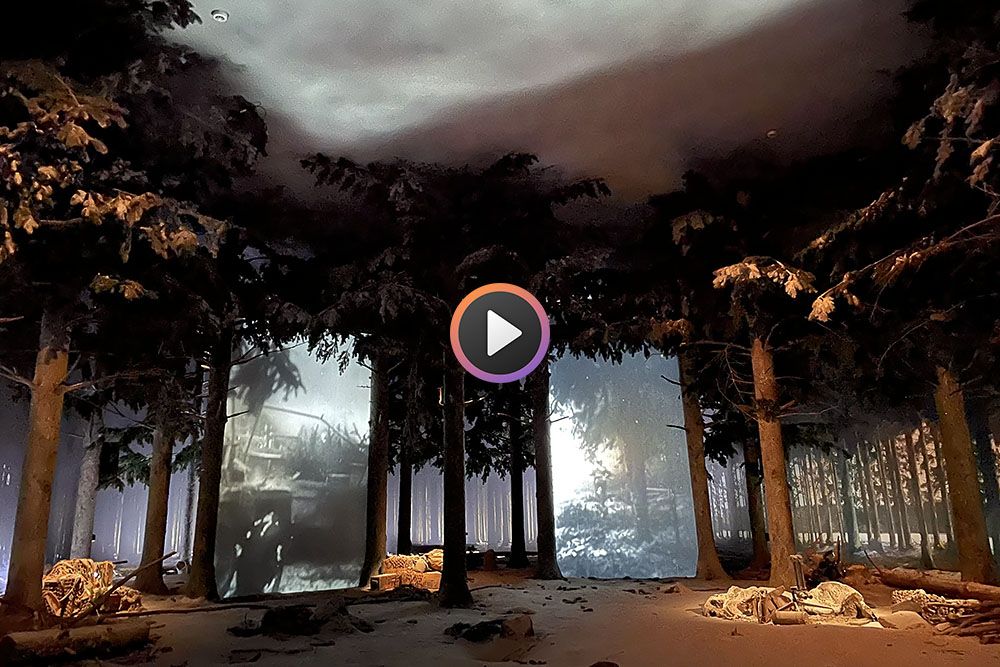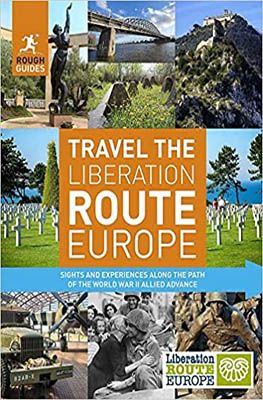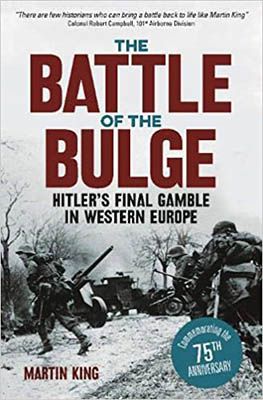The Ardennes are a beautiful wooded and hilly region in Belgium, Luxembourg and northern France. Thanks to its beautiful nature with special flora and fauna, the region is popular with hikers. However, the Ardennes also has a tragic wartime past. In the winter of 1944-1945, the area was the battleground of the German army’s last major offensive: the Battle of the Bulge. To learn more about this, we went on a journey of discovery around Liberation Day. We followed several stages of the Liberation Route Europe (LRE): a network of 10,000 walking kilometres along commemorative sites of the liberation of Europe. A memorable round trip that will also definitely appeal to walkers less interested in history!
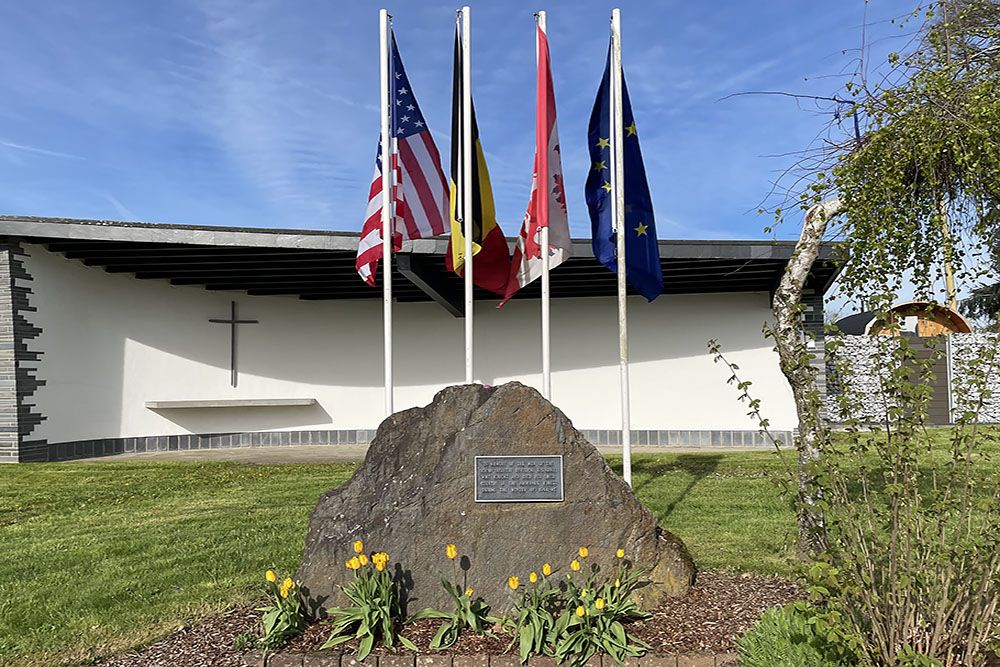
The Battle of the Bulge in a nutshell
With the Battle of the Bulge, the German Wehrmacht wanted to launch a surprise attack. The aim was to cut off the supply lines from Antwerp for the Allies. Despite initial success, the German offensive soon met with opposition from both American and British forces. The Battle of the Bulge was one of the deadliest battles of World War II. Both sides suffered heavy losses.
Luxembourg Ardennes
We start our visit to the Ardennes in Luxembourg’s Diekirch and its surroundings. Here we meet Frank Rockenbrod, our guide and also founder of the National Museum of Military History in Diekirch. We first visit the American and then German war cemetery with Frank.
General George Patton is also buried in the American cemetery in Hamm. While Patton was a celebrated hero in the Battle of the Bulge, he was not a casualty of that same battle. The general died in a car accident in late 1945. Next, we visit the German war cemetery in Sandweiler. Nearly 11,000 German soldiers have their final resting place in this cemetery.
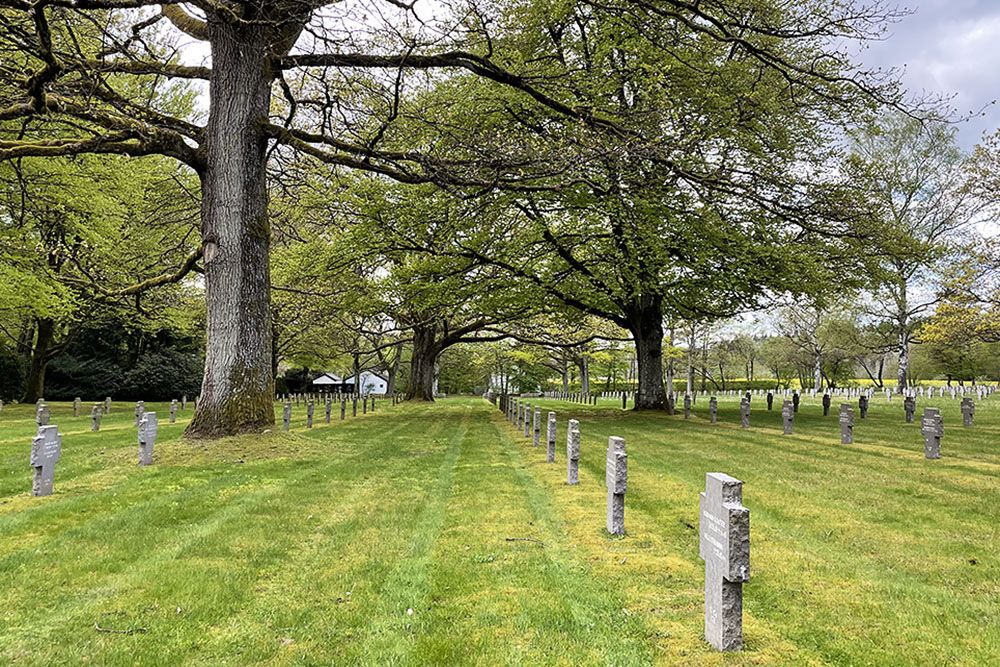
Diekirch
Our guide Frank escorts us to Diekirch. This small, picturesque town in central Luxembourg has a rich past dating back to the 8th century. You can enjoy walking, cycling and kayaking there. There are also nice terraces in the partly car-free centre. However, Diekirch is best known for one of the most important battles during the Battle of the Bulge.
National Museum of Military History
In the middle of Diekirch, we visit the National Museum of Military History. The museum is located in Diekirch’s old brewery. Little has been done to the exterior of the building. Only the old tanks on the grounds give the impression that we are about to learn a lot about the Battle of Diekirch.
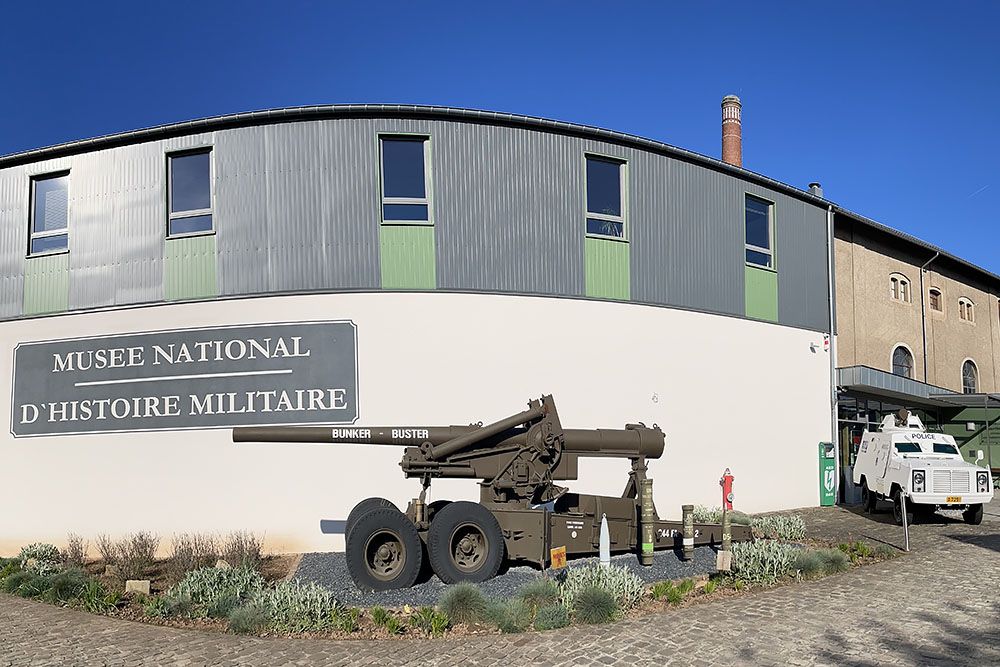
In the 1980s, our guide Frank founded this museum with a group of collectors and history enthusiasts. Over the years, they have expanded the museum considerably. For instance, they added fascinating dioramas: detailed and realistic reproductions of what daily life was like for soldiers and civilians.
Frank has gained an extraordinary amount of knowledge from his fascination with the Battle of the Bulge. As we walk past the many dioramas, we hang on his every word. He presents us with so many interesting but also tragic facts that we all become silent. Deeply impressed, we leave the museum after a few hours… far too soon in our opinion.
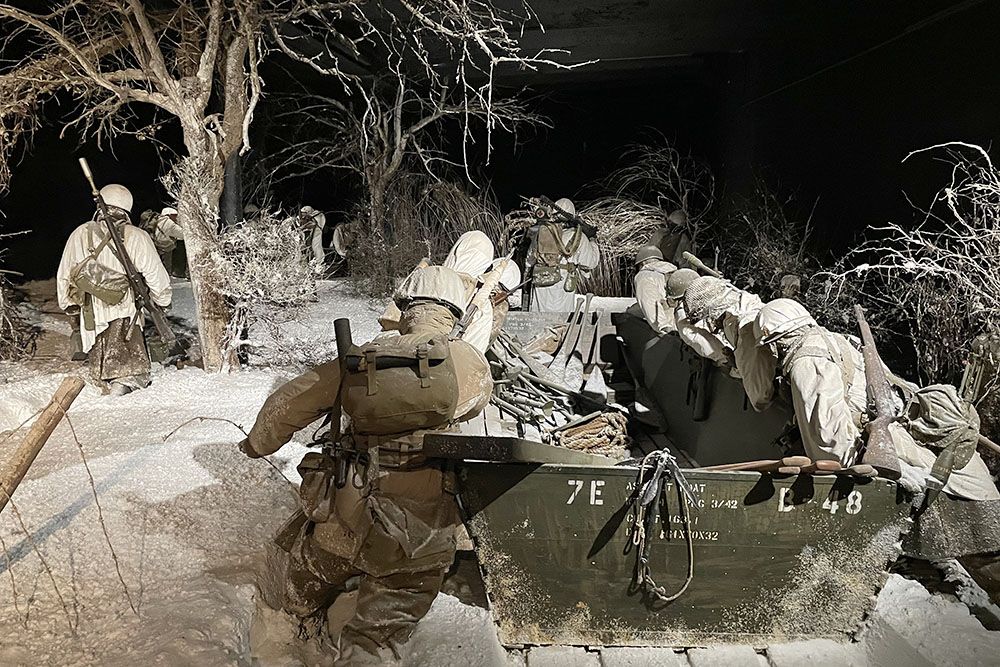
Schumann’s Eck
The next morning, we meet again with our guide Frank. At Café restaurant Schumann’s – Eck, he picks us up for a forest walk nearby: the “Battle Of Bulge Memorial Trail”. This “memorial trail” leads right through the forest where one of the deadliest battles of the Battle of the Bulge took place. The Battle of Schumann’s Eck was a key turning point in the Battle of the Bulge.
Along the route, we see many foxholes and some overgrown trenches. Furthermore, there are life- size silhouettes all over the forest. Our guide Frank made all of these from original photographs. It is these photos of both German soldiers, Allied troops and civilians that bring the story to life. Namely, the story of merciless fighting in a harsh, freezing winter. Many of the silhouettes are also accompanied by information panels with additional explanations and a QR code. Scanning the QR will take you to sound and video recordings made during the battles there. Very nicely done with an eye for detail!
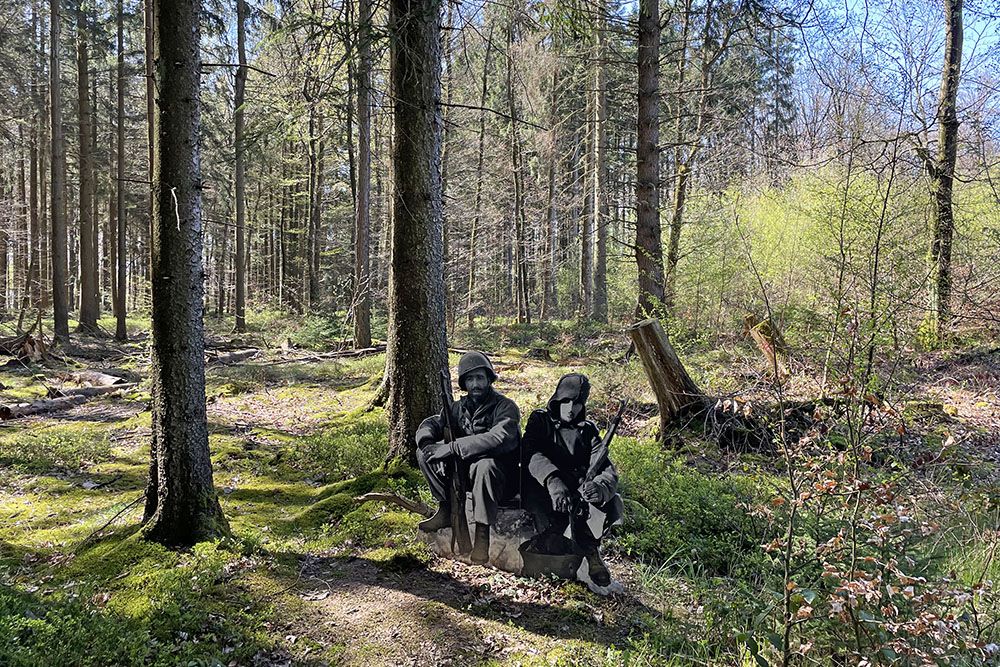
Belgian Ardennes
We continue our liberation route to the Belgian Ardennes. In itself familiar territory as we do a few hikes here every year. But Bastogne (Bastogne), where we are going to now, we don’t know well.
Bastogne
Cycling enthusiasts know Bastogne mainly from the Liège-Bastogne-Liège cycling classic, which has been held since the end of the 19th century. There are also some interesting historical sights in Bastogne. Like the Saint-Pierre church from the 9th century. And the “Porte de Trèves” (Gate of Trier) from the mid-14th century. But most visitors come there for the monuments and various museums about the Battle of the Bulge. The same applies to us during this trip. We start our stay in Bastogne with a visit to the particularly interesting war museum. Next on the schedule is a bike ride to the infamous Bois Jacques and the Forest of Peace.
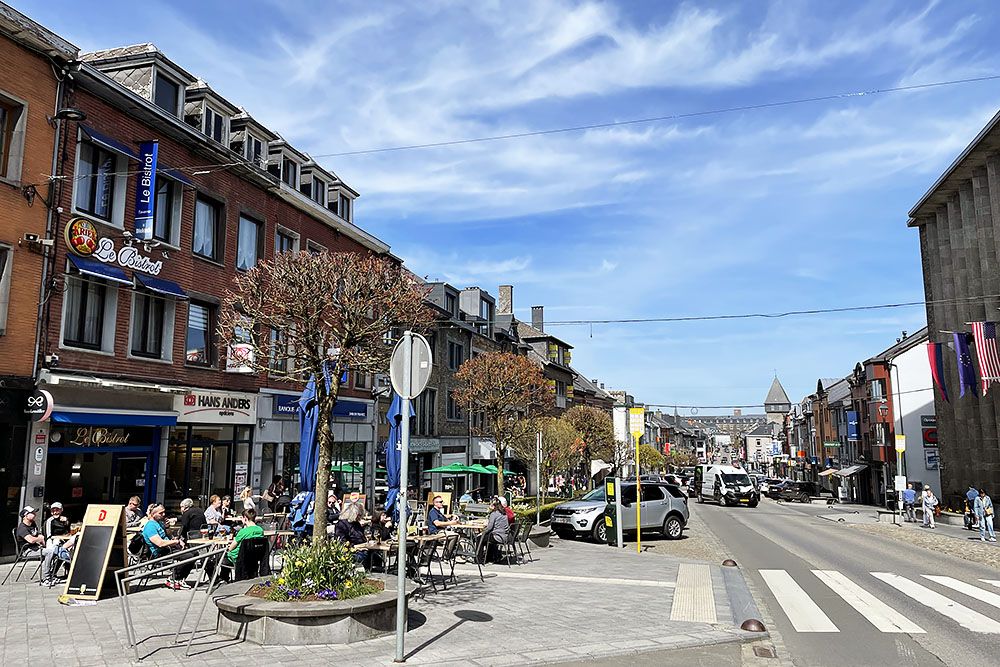
Bastogne War Museum
One of the main attractions in Bastogne is the recently renovated Bastogne War Museum. This museum is mainly dedicated to World War II with a focus on the Battle of the Bulge and Bastogne. But since the renovation, the line from the past has also been beautifully extended to the present There are many multimedia rooms where you can see, hear and read all sorts of things, think: weapons, tanks, uniforms, vehicles and a fascinating 30-minute film.
Upon entering the modern and beautifully designed war museum, we are immediately introduced to four characters: an American corporal, a German lieutenant, a teacher who is also a member of the resistance, and a schoolgirl. In four languages, the characters illuminate the causes, course and consequences of the battle. Interesting as it lets us hear the (personal) story of the Battle of the Bulge from various perspectives.
Bicycle ride to “Bois Jacques” and the Forest of Peace
At the Bastogne tourist office, we meet up with our guide Martin Cugnon: a Wallonian who speaks fantastically good English. The first place of interest is the American Sherman tank on Place McAuliffe, right next to the tourist office. Martin knows a surprising amount about it. After this, we visit the Battle of the Bulge Monument (previously called the Mardasson Memorial). This imposing 12-metre-high structure is shaped like the five-pointed American star. Its walls commemorate the nearly 77,000 killed and wounded.
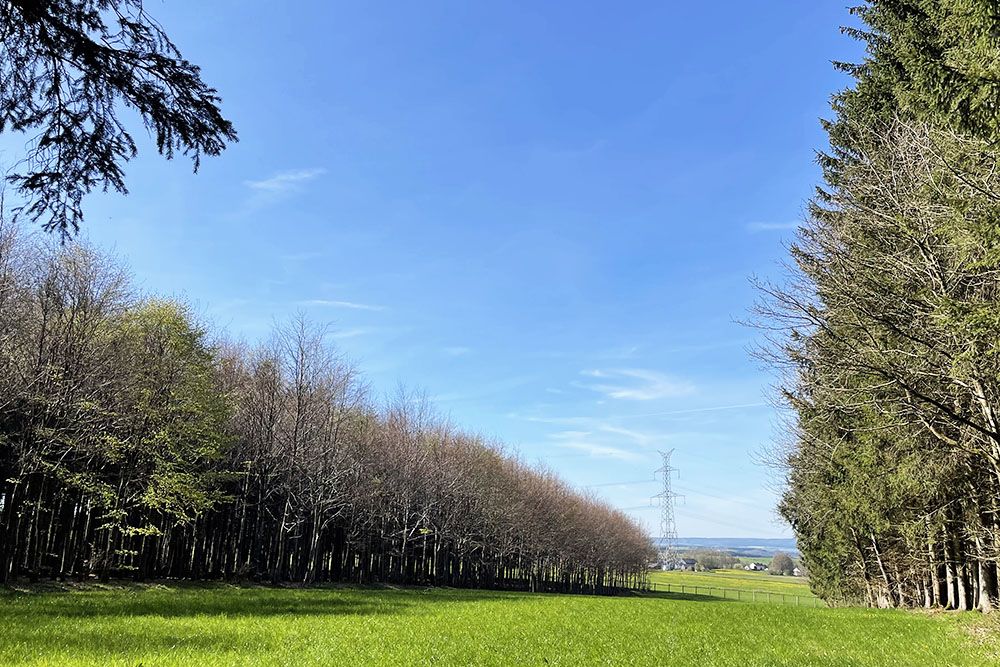
We continue our bike ride through a beautiful rolling landscape of alternating meadows and forests. At the Bois Jacques, we park our bikes. In this forest just outside the village of Foy, the American Easy Company entrenched itself waiting for supplies. A short walk takes us past many foxholes the troops dug to protect themselves against enemy artillery. The forest also plays a role in the book and later TV series “Band of Brothers” (about the Easy Company).
The last part of the bike ride takes us to the Peace Wood. To commemorate the Madison Battle of the Bulge, 4,000 trees were planted here in 1994. They stand there in honour of all the civilians and soldiers who died during the fighting. Besides our little group, we encounter more cyclists and walkers. Yet there is a serene calm in the forest, as though everyone was in deep contemplation. So were we: guide Martin’s particularly interesting stories gave us a lot to ponder.
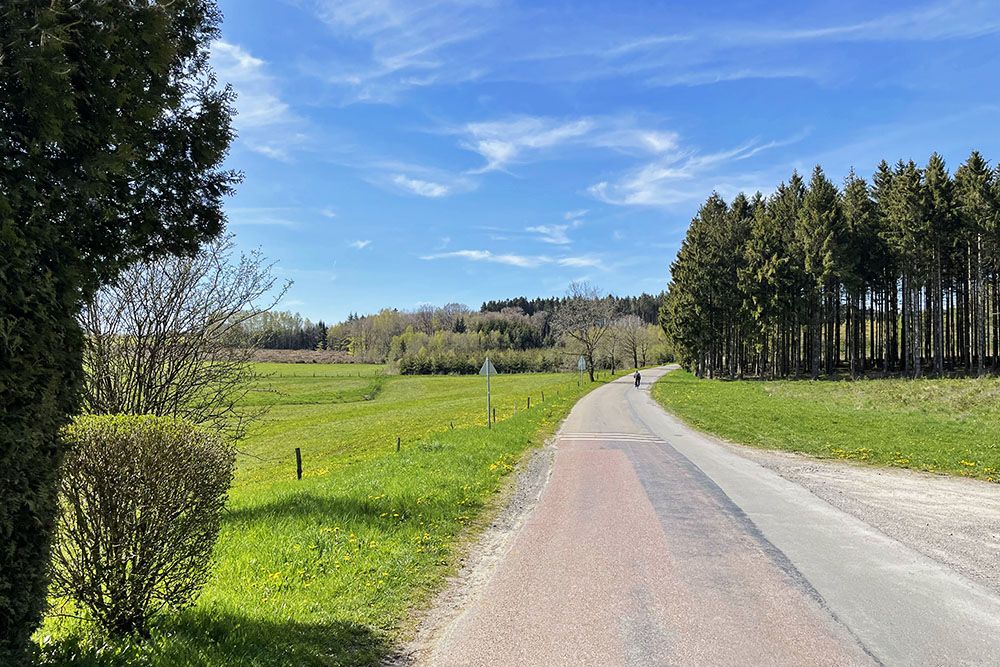
Other memorable locations of the Battle of the Bulge
Our bike ride in the Bastogne area was the conclusion of an impressive journey in time. By visiting both the Luxembourg and Belgian Ardennes, we got a good picture of the Battle of the Bulge.
But there are other memorable locations in this part of Belgium and Luxembourg that are definitely worth a visit. Like Malmédy where a massacre took place, and where an interesting museum can now be found. Or northern La Gleize. Here, the advance of an elite unit of the Waffen SS was halted. Some historians believe the Germans lost the war here. In the village you will find the December ‘44 Historical Museum.
The beauty of the Liberation Route Europe stages is that they largely follow existing tourist walking routes. But then supplemented with sights along the route related to World War II. They usually take you through beautiful natural landscapes. The Liberation Routes are therefore also worthwhile if you are just a little less interested in the Battle of the Bulge than we are.
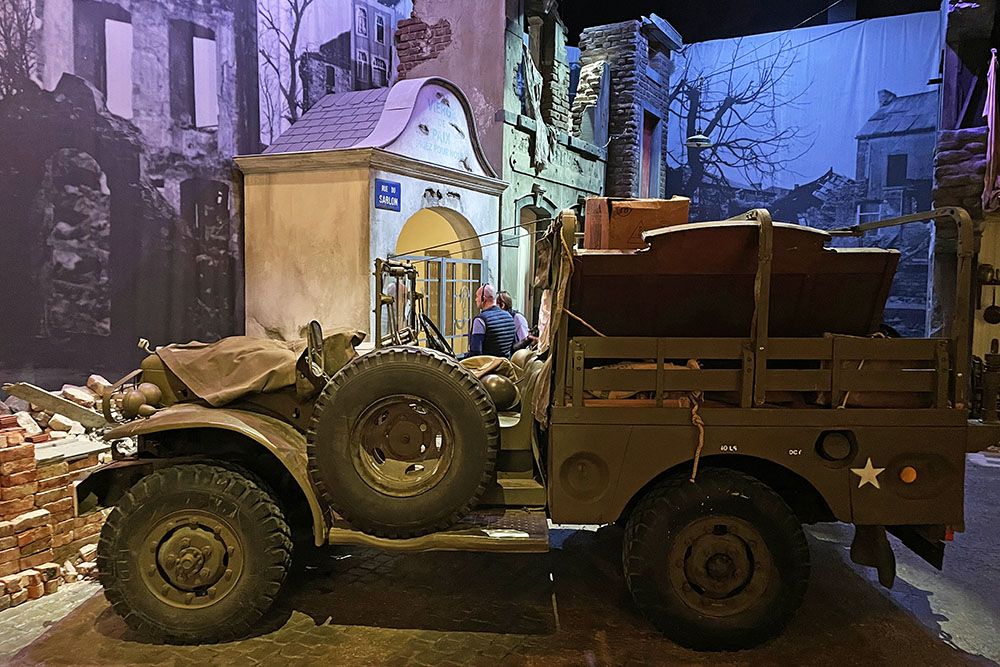
We made the tour of memorable locations of the Battle of the Bulge at the invitation of Liberation Route Europe. We compiled the content of the blog independently and objectively based on our own impressions.
Frequently asked questions about the liberation route past locations of the Battle of the Bulge
You can start the different stages of the Liberation Route at any location. And of course, you don't have to visit every location described in this blog. But if you want to keep the correct chronological order, start in Luxembourg. Then continue to Bastogne.
Plan at least four days for your visit to the locations in the Luxembourg and Belgian Ardennes described in this blog. Are you an avid hiker? Then plan for at least a week.
The easiest and fastest way is to make it by private car. Taking the train to, say, Diekirch will take you about 7 hours of travel time. On top of that, Bastogne cannot be reached by train. However, buses do go from Diekirch to Bastogne. You will then spend around an hour and a half travelling time. Besides, some locations of the described liberation route are not in or near Diekirch and Bastogne.
Are you making this trip mainly for the memorable sites of the Liberation Route? Then our advice is to stay overnight in the towns of Diekirch and Bastogne. If you are travelling around by private transport, find a hotel with parking facilities:
- Diekirch. We spent the night at the Esplanade Hotel. Lovely hotel with good breakfast, located close to the National Museum of Military History. However, the hotel does not offer parking facilities.
- Bastogne. We ourselves stayed at hotel Leo Station. When booking, ask for a room in the main building. There is also an annex building where you may have large but somewhat plain rooms. In the main building you will also find a nice, attractively decorated restaurant and bar.
Liberation Route Europe is a route network of nearly 10,000 walking kilometres across Europe. The routes are the same as those walked by the Allies in the years 1943 to 1945. The walks pass by numerous historical sites and tell the stories from various perspectives about the last phase of World War II.

